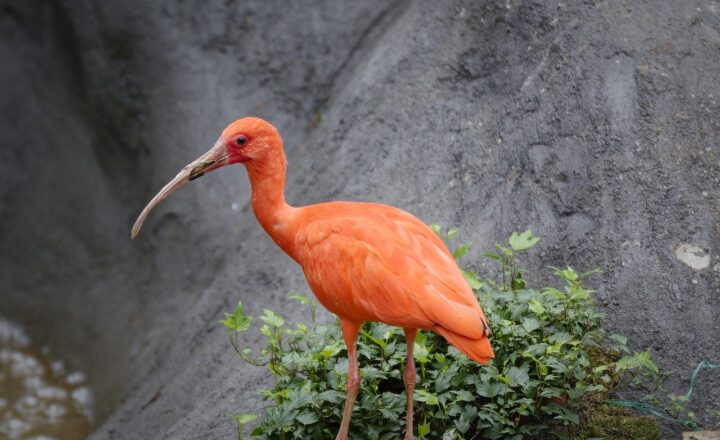The Role of Squirrels in Forest Ecology: How These Small Rodents Shape the Landscape
November 13, 2024

Squirrels are often viewed as playful creatures, darting from tree to tree in search of food. However, these small rodents play a crucial role in maintaining the health and diversity of forest ecosystems. This article explores the fascinating ways in which squirrels shape forest ecology, from seed dispersal to influencing plant diversity, and how their behaviors impact the larger environment.
1. Understanding Squirrel Species and Their Habitats
There are over 200 species of squirrels worldwide, generally categorized into three main types: tree squirrels, ground squirrels, and flying squirrels. Each of these species occupies a specific niche within their environment, from the dense canopy of forests to open grasslands and urban areas.
– Tree Squirrels: These are the most recognizable squirrels, often found in wooded areas and parks. They are agile climbers and primarily forage on tree branches.
– Ground Squirrels: These burrowing squirrels live in colonies and are typically found in open grassy fields and deserts, where they dig extensive tunnel systems for shelter and food storage.
– Flying Squirrels: Equipped with a patagium (a flap of skin), flying squirrels can glide between trees. Although they are nocturnal, their role in the ecosystem is profound during the night.
Each species contributes to the ecological balance in unique ways, and understanding their behavior is key to appreciating their role in forest health.
2. Seed Dispersal: A Critical Ecological Function
One of the most significant ecological roles that squirrels perform is seed dispersal. As squirrels gather nuts and seeds for food, they often bury them in various locations for later retrieval. This behavior has several important consequences for forest ecosystems:
– Facilitated Forest Regeneration: Squirrels help in the growth of trees by burying seeds that can sprout into new plants if they remain undiscovered. Oak trees and pine trees, in particular, rely heavily on squirrels for effective seed dispersal.
– Biodiversity Promotion: Different species of trees provide different ecological benefits. By enabling various trees to take root, squirrels play a role in promoting biodiversity, which is essential for a healthy forest.
– Soil Enrichment: The act of burying seeds contributes to soil aeration and nutrient enrichment, further enhancing forest growth.
Through their foraging habits, squirrels inadvertently act as forest gardeners, nurturing the growth of various plant species that thrive in their habitats.
3. Interactions with Other Wildlife
Squirrels are an integral part of the food web in forest ecosystems. They serve as prey for a variety of predators, including hawks, owls, snakes, and foxes. This interconnected relationship highlights their importance in maintaining ecological balance:
– Prey Dynamics: Squirrels are a crucial food source for many carnivorous animals. Their population dynamics can significantly influence predator populations, thus maintaining the balance within the ecosystem.
– Competition and Cooperation: Squirrels often compete with other seed-eating animals like birds and rodents. This competition helps maintain species balance and ensures that no single species dominates resource use.
– Mutualism: Squirrels also engage in mutualistic relationships with plants, where the plants provide food (seeds and nuts) in exchange for the squirrels’ role in seed dispersal.
These interactions with other species underscore the importance of squirrels in maintaining a healthy and functioning ecosystem.
4. Habitat Creation and Modification
Squirrels are not just passive participants in their environment; they actively modify their habitats, which can enhance biodiversity:
– Nest Building: Squirrels create nests called dreys, which are often made from twigs and leaves. These nests provide habitat for other forest-dwelling creatures and can eventually lead to the creation of microhabitats.
– Tree Health: When squirrels chew on bark or strip leaves from branches, they may inadvertently stimulate the growth of new shoots. While this might seem detrimental, it can lead to healthier tree growth in some instances.
– Regeneration of Dead Trees: The actions of squirrels can help break down dead trees, contributing to nutrient cycling. As they forage, they may create gaping holes in decaying wood, which can be crucial for various fungi and insects.
Through these processes, squirrels play an active role in ensuring a vibrant and diverse ecosystem.
5. Squirrels in Urban Ecosystems
As cities expand, squirrels have adapted to urban environments, continuing their essential roles in altered ecosystems:
– Food Sources: Urban areas provide abundant food resources for squirrels, including park trees, gardens, and human food waste. This adaptation allows squirrels to thrive in urban settings.
– Ecological Importance: Even in cities, squirrels contribute to biodiversity by interacting with local flora and fauna. They help with seed dispersal in parks and residential areas, contributing to urban forest health.
– Education and Awareness: Urban squirrels often become part of community wildlife education initiatives, fostering a connection between people and nature. Their presence can help raise awareness about the need for wildlife conservation and habitat preservation even in built environments.
In adapting to urban ecosystems, squirrels continue to fulfill their ecological roles, reminding us of nature’s resilience amid changing environments.
6. The Conservation of Squirrel Species
While squirrels play vital roles in ecosystems, several species are threatened by habitat loss, climate change, and urbanization. Conservation efforts are essential to maintain their populations and, consequently, the ecological functions they provide:
– Habitat Protection: Initiatives to preserve and restore forest habitats can enhance squirrel populations and the overall biodiversity of ecosystems.
– Research and Education: Ongoing research into squirrel biology, ecology, and behavior can provide better insights into their roles in nature, offering directions for successful conservation practices.
– Public Engagement: Encouraging public interest and involvement in local wildlife programs can foster a community-centered approach to conservation. Engaging communities in habitat restoration efforts can enhance their commitment to protecting these small rodents and their ecosystems.
By investing in the conservation of squirrels, we ultimately protect the intricate web of life that depends on their presence and actions.
Conclusion
Squirrels are more than just playful creatures inhabiting our parks and forests. Their significant role in forest ecology—from seed dispersal and influencing biodiversity to modifying habitats—cannot be overstated. As we continue to learn about the interconnectedness of species within ecosystems, protecting these small but mighty rodents is essential for maintaining the health of our forests and the broader environment.
By understanding and appreciating the vital contributions of squirrels, we can take steps towards ensuring their preservation, thereby fostering healthier ecosystems for generations to come.








